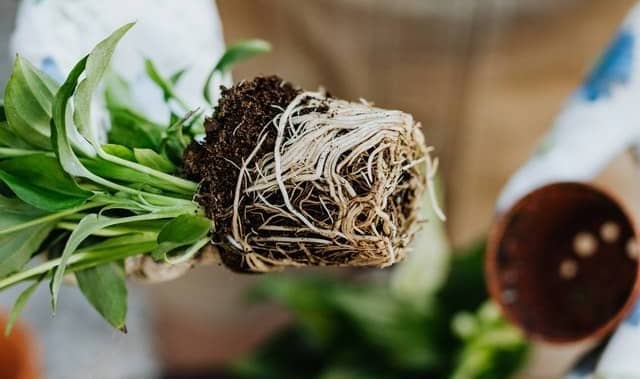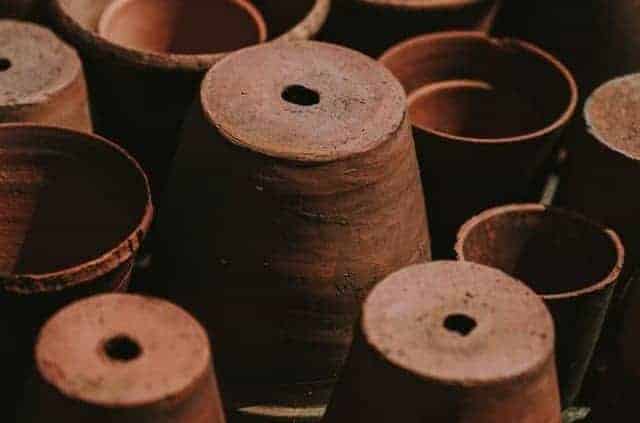If you’re active in the gardening community, you might have heard of fabric grow bags. If you think this is a temporary fad, an organic DIY trend that everyone’s caught onto, think again!
It’s actually a pretty viable way of growing plants and can be a permanent replacement for plastic pots.
Grow bags make gardening more manageable – especially if you lack outdoor space – and these days, they’re very easy to source.
You can even make them yourself from material lying around the house. But since grow bags are not all that common, we understand if you have your doubts.
You might think grow bags stifle your plant’s growth or that they won’t be able to fare against wind or rain. Well, we’re here to dispel those misconceptions and explain to you why you should choose grow bags over plastic pots.
They’re proven to be healthier for your plants than plastic pots, and they’re easy to move around and store too.
So, let’s take a deeper look at how grow bags compare to plastic pots and why you shouldn’t be quick to dismiss them.

What Are Fabric Grow Bags?
Similar to plastic pots, fabric grow bags hold soil for growing plants.
You can find grow bags in plastic and other synthetic materials as well. Moreover, they come in several different sizes, usually found between 1 gallon and 200 gallons.
If you’re looking to grow small vegetables like tomatoes, cucumbers, and lettuce, you might want to go for a smaller size. However, if you’re going to plant a tree, a larger bag is better.
Advantages Of Grow Bags
- Healthier roots: Encourages root pruning rather than root circling
- Better temperature control: Breathable fabric makes it easy to regulate temperature
- Improved drainage: Excess water can drain out through the fabric
- Easy handling and storage: Takes up minimal space and can be folded
- Versatile: Plant them directly in the ground or house them indoors
Healthier Roots
A plant will soon outgrow a plastic pot. When the plant roots reach the edge of your pot, they keep growing in search of more water and nutrients. The roots have nowhere to expand so they begin to grow in circles and end up a tangled mess. This can drastically increase water stagnation and oxygenation issues, especially when the water does not drain properly from the pot.
This causes the roots to become constricted, which will force the stem to bear undue pressure leading to tissue damage to the roots and stem, and will seriously weaken the plant.

Fabric grow bags avoid this problem because when the roots approach the edge of the bag, they are exposed to the air, which stops the root growth.
This phenomenon is called air pruning, and it’s crucial for a plant’s health as it prevents roots from overgrowing and damaging the overall structure of the root ball.
With air-pruned roots, you get a more fibrous root system that allows them to absorb more nutrients and water. On the other end of the spectrum, you get overgrown and constricted roots in potted plants.
FURTHER READING
Better Temperature Control
Plastic pots and planters can absorb a lot of heat, especially in the summertime or under direct sunlight.
Unfortunately, there is no outlet for this heat to release fast enough, so it ends up being absorbed by the plants.
In contrast, fabric bags are breathable, and they can release heat dynamically due to their porous construction.
Due to the breathable quality of fabric bags, more soil can contact the air, whereas, in plastic pots, only the top layer of soil is exposed to air.
With more contact comes better aeration, which prevents soil compaction and increases nutrient absorption from the soil.
Also, water can penetrate easily through the soil if it contains more air, allowing for more even distribution.
Lastly, the chances of your plants overheating are drastically diminished with fabric grow bags. You can leave them in the sun without worrying about them overheating.
Improved Drainage
As compared to plastic planters, it is much harder to over-water a fabric grow bag. Due to the porous nature of these bags, the excess moisture seeps out.
While fabric pots do need slightly more watering than pots, the good part is that you do not need to worry about mold or fungus growth due to water retention.
And since the soil in a grow bag has more contact with air, more water can escape via evaporation. It’s essential to make sure the fabric grow bag you buy is made of breathable material.
Easy Handling And Storage
Storing pots can be a real problem when they are not in use. You always risk breaking or chipping them when moving them around (not that easy to move anyways), and leaving them stacked up in your backyard can prove to be a real eyesore.

Furthermore, you may need to move the entire stack to your shed in the offseason, which is a big task in itself. In contrast, grow bags are effortless to store and handle.
Fabric grow bags can be folded up and stowed away, which is an advantage over the space-consuming nature of pots. Also, the more commonly found pots often look dreary, and they end up dictating the décor of the area.
Another considerable advantage of grow bags is that you can start your plants much earlier in the season.
If you live in a cold climate that features a short growing season, you can start your plants by growing seedlings indoors in the winter.
In areas with short daylight hours, you can use artificial lights near these bags while you’re growing them indoors.
Since they’re so easy to handle and transport, you can shift the plants outdoors when the weather warms up a bit without worrying about damaging the roots.
Moreover, some fabric grow bags are biodegradable, meaning that you can put them in the ground with your plants and let them rot away.
When it is warm enough outside, you can move the grow bag outdoors without disturbing the roots. This protects your plants from trauma and death.
Versatile
Grow bags can be used anywhere, and most indoor plant enthusiasts prefer them since they are so lightweight.

They’re also quite popular with people who travel with their plants, especially motor home and RV users.
Grow bags have handles so you can easily transport them from the inside to outside and vice versa.
They take up minimal space, and you can easily store them away when not in use. As mentioned before, many grow bags are biodegradable; therefore, you can plant them directly in the ground.
Since they’re equipped with handles, they can be hung anywhere inside the house, using a rope or chain, and they fold up flat, making them easier to store in large numbers.
Disadvantages of Grow Bags
While we’ve talked plenty about the advantages of using grow bags, there are a few drawbacks to them as well. However, these disadvantages are not deal killers, and with suitable precautions, you can avoid them.
Grow Bags Do Not Adapt Well To Cold Climates
If you live in an area that experiences temperate weather, you might have to shift your bag indoors or account for some insulation when the temperature drops at night.
Furthermore, since grow bags are breathable and allow heat to escape from all sides, they are not good at retaining heat, exposing the plant to cold and potentially putting it at risk of frost.
Their breathable quality comes at the expense of insulation, and plants can die if they are left outside during low temperatures, especially during a sudden early fall or late spring frost.
However, if you make proper arrangements by moving your bag indoors where the temperature is warmer, your plants should do fine.
Grow Bags Need Frequent Watering
Grow bags have better drainage than traditional pots, which means that more water is lost through evaporation and seepage.
Compared to pots, the soil in grow bags can dry out much faster, especially in low humidity climates or in high temperatures.
To fix this problem, you can use a drip irrigation system, such as a hose with drip emitters, to simultaneously provide water to multiple grow bags.
You can also use a bottle watering system, which is particularly useful if you can’t tend to your plants for an extended period. This ensures constant moisture levels in the soil.
Where Can You Buy Fabric Grow Bags?
Grow bags are all the rage these days, and you can find tons of suppliers who offer grow bags for sale at many different price points.
If you’re looking for pre-made grow bags, you can find them at Amazon, Home Depot, or Lowe’s or search for custom-made bags online.
For convenience, don’t leave the house; just visit Wraxly for high-quality, durable fabric grow bags. For more information on why you should buy fabric grow bags over plastic pots, feel free to get in touch!

Darrell has a passion for gardening that he inherited from his father. Go here to read more about the influence his father played in his love for gardening. If you want to send Darrell a quick message, then visit his contact page here.



![Container gardening for beginners [Buying guide]](https://wraxly.com/wp-content/uploads/2021/02/Container-gardening-for-beginners-Buying-guide-1200-1024x576.webp)